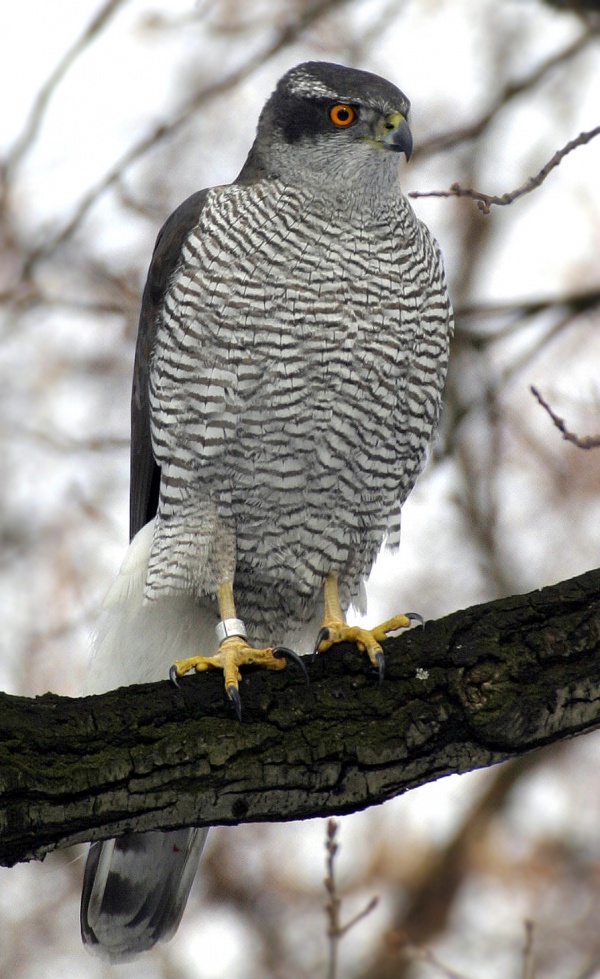Facts About Northern goshawk
The northern goshawk is a captivating bird of prey from the Accipitridae family, which also includes eagles, buzzards, and harriers. Scientifically named Accipiter gentilis, this "true hawk" was first described by Linnaeus in 1758. These birds inhabit temperate regions across the Northern Hemisphere, including Eurasia and North America. Although typically sedentary, northern goshawks from colder regions migrate south during the winter.
Habitat and Distribution
Northern goshawks have a broad range, residing in Europe (excluding Ireland and Iceland), Russia, northwestern Africa, parts of Asia (such as Japan and the Himalayas), and North America. In the United States, they are commonly found in the western states, Alaska, Canada, and occasionally in the east, particularly around the Great Lakes and the mountainous regions of New England and New York.
Preferred Environment
These birds favor both deciduous and coniferous forests with tall, mature trees. They thrive in areas with ample canopy cover and minimal undergrowth, often near clearings that provide good hunting grounds.
Physical Appearance
Northern goshawks possess short, broad wings and long tails. Their plumage ranges from blue-grey to brownish-grey on the upper parts and grey or white underneath. Juveniles are brown with streaky markings. Females are significantly larger than males. Adult goshawks feature a distinctive white stripe above their eyes, and their eye color changes with age and region.
Vocalizations
During courtship or nesting, you can hear their repetitive calls. Males emit a high-pitched "kew-kew-kew" call, while females have distinct alarm calls.
Taxonomy and Related Species
The genus *Accipiter* includes nearly 50 species. The northern goshawk is closely related to Meyer’s goshawk and Henst’s goshawk, part of a group that includes other large goshawks.
Subspecies
Several subspecies of northern goshawks exist, including:
- *A. g. gentilis* (Europe)
- *A. g. atricapillus* (North America)
- *A. g. buteoides* (northern Eurasia)
- *A. g. albidus* (northeastern Siberia)
Each subspecies shows slight variations in size and color.
Similar Species
Juvenile goshawks might be mistaken for other *Accipiter* species, but they are larger and bulkier. In North America, they can be confused with Cooper’s hawks or some buteonine hawks.
Behavior
Northern goshawks are typically solitary or found in pairs and are highly territorial. Their migration patterns are partial, depending on food availability and weather conditions.
Diet
As formidable hunters, goshawks prey on birds and mammals, utilizing their agility and speed. Their diet includes corvids, pigeons, gamebirds, squirrels, and rabbits, varying by region.
Breeding
Goshawks return to their breeding grounds between March and April, building nests in tall trees. They often reuse old nests or construct new ones. Females lay several eggs and incubate them, while males provide food. The young fledge approximately 50 days after hatching.
Lifespan
In the wild, northern goshawks can live up to 11 years, with the oldest known wild bird living over 16 years. In captivity, they can reach up to 27 years.
Conservation Status
The northern goshawk boasts a robust global population estimated at over a million birds. Despite stable or increasing numbers in many areas, they face threats from habitat destruction and human persecution.
Human Interaction
These birds hold cultural significance in the Azores and have a long history in falconry. They remain popular for falconry due to their exceptional hunting skills and adaptability.

 Bosnia and Herzegovina
Bosnia and Herzegovina